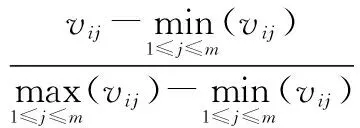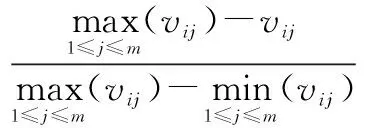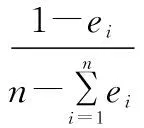A Study of Coupling Coordination between Marine Economy and Land Economy Based on Gear Model
, ,
1.School of Economics, Ocean University of China, Qingdao 266100, China; 2.College of Physical and Environmental Oceanography, Ocean University of China, Qingdao 266100, China
1 Introduction
Marine economic system as a complex regional economic development system is affected by the land economy and it shows the particularity of the marine economy. The marine economic system and land economic system are closely linked systems. The coupling coordinative analysis of marine and land economy has become a key topic, because the marine economy plays an important role, and has important practical significance to the realization of sustainable development of the national economy. In recent years, the coupling coordinative theory has been widely used. The coupling coordinative degree is simply used to describe the interaction between objects. Huang Ruifen (2011), William (2011) and other scholars applied this theory to the research of land and marine industry; Wu Yuming (2008), Liu Dinghui (2011), Zhang Hongchao (2013) and other scholars used it for the study of regional economic research; Huang Muyi (2012) used the theory to study the relationship between city and region economy; Zhang Chunyan (2014) used the theory to study the relationship between tourism industry and new urbanization; Fang Falin (2103) used gear model to improve the parameters, which makes the coupling coordinative model more applicable. However, the coupling coordinative model for the relationship between marine economy and land economy has not been researched widely and deeply enough. Using the method of quantitative analysis will help provide an effective method for the evaluation of marine economy and land economy system.
2 Establishment of coupling coordinative evaluation index system and research method
Based on the current situation of the marine economy, following the scientific, comprehensive and feasible guidance, we establish the evaluation index system of marine economy and land economy system (Table 1).
Table 1 shows that the evaluation index system is divided into the goal layer, function layer, criteria layer and index layer, and its purpose is to explore the marine economy system’s internal structure, function and main characteristics. Among them, the goal layer is the evaluation index system of marine economy and land economy; function layer consists of marine economy and land economy sub-systems; criteria layer covers five standard systems, including system environment, system management, system structure, system performance and system of sustainable development capacity; the index layer is to realize the target refinement; the index type describes the index’s positive or negative effects on economic system. Specifically, the system environment refers to the external environmental factors of the economic system; system management refers to the management and control of the economic system; system structure refers to the structure of the economic system; system performance refers to the utility output of economic system; system sustainable development capacity refers to the sustainable development of economy and the potential of the system. The degree of coupling is simply used to describe things’ influence. From the perspective of synergies, the coupling coordinative degree determines the system from disorderly to orderly trends. The synergistic effect on the order parameter is the basis for the realization of the process, and the synergistic effect on system plays a very important role. And the coupling degree can measure this precisely synergistic effect. The degree of coupling is widely used in the evaluation of the two economic systems. However, in some cases, it is difficult to reflect the overall effectiveness of marine economy and land economy, so the coupling coordinative degree model is better. The ordinary coupling coordinative model’s parameter is fixed. It can not reflect the dynamic changes of the two systems, so the introduction of gear model can solve this problem.
Table1Theevaluationindexsystemofmarine-landeconomy

GoallayerFunctionallayerCriterialayerIndexlayerIndextypexmarineeconomysystemx1systemenvironmentx11areaofmarineaquaculturepositivex12industrialwastewaterintotheseanegativex13numberofhotelspositivex2systemmanagementx21comprehensiveutilizationrateofindustrialsolidwastepositivex22numberofcoastalobservationstationpositivex23areaofnaturereservespositivex3structureofthesystemx31primaryindustrypositivex32secondaryindustrypositivex33tertiaryindustrypositivex4systemperformancex41grossoceanproductpositivex42addedvalueofprimaryindustrypositivex43totalseawateraquaticproductspositivex44addedvalueofsecondaryindustrypositivex45addedvalueoftertiaryindustrypositivex46internationalstandardizedcontainershandledatcoastalseaportspositivex5systemofsustainabledevelopmentcapacityx51personnelengagedinscientificactivitiespositivex52numberofinstitutionspositivex53numberofresearchsubjectsPositiveTheevaluationx54employedpopulationpositiveindexsystemofx55proportionofthegrossoceanproductinGDPpositivemarineeconomyylandeconomysystemy1systemenvironmenty11industrialwastewaternegativeandlandeconomyy12industrialsolidwastenegativey13annualproductionwaternegativey1systemmanagementy21industrialpollutioncontrolinvestmentcompletedpositivey22comprehensiveutilizationrateofindustrialsolidwastepositivey23totalinvestmentinenvironmentalpollutioncontrolpositivey3structureofthesystemy31primaryindustryPositivey32secondaryindustrypositivey33tertiaryindustrypositivey4systemperformancey41landoutputvaluepositivey42addedvalueofprimaryindustrypositivey43addedvalueofsecondaryindustrypositivey44addedvalueoftertiaryindustrypositivey45totalinvestmentinfixedassetspositivey46CPInegativey5systemofsustainablede-velopmentcapacityy51educationfundspositivey52totaloutputvalueofhigh-techenterprisepositivey53proportionofthethirdindustryprofessionalspositivey54patentauthorizationpositivey55technologymarketturnoverpositive
In order to avoid the influence of the dimension difference, the normalization method is used for the data at first. Then the standard formula can be made.

(1)

(2)
wherevijis theith index value in yearj;xijis theith standard index value in yearj.
In order to reduce the influence of subjective factors, the information entropyeiis used to determine the weight of indexqi.
(3)

(4)
The comprehensive evaluation function is used to calculate the comprehensive development level of marine economy and land economy system, respectively.
(5)
wheref(x) andf(y)are the level of comprehensive development of marine economy and land economy system, respectively;qijis theith criterion and thejth index weight.
By capacity coupling concept and capacity coupling coefficient model in physics, we can draw the coupling degreeCof marine economy and land economy.

(6)
With the help of the coupling degree, we can draw the coupling coordinative degreeD.Tis comprehensive evaluation index of marine economy and land economy system.
D=(CT)θ
(7)
T=αf(x)+βg(y)
(8)
Based on the coupling coordination model with the values ofαandβ, we use the principle of mechanical gear to analyze the subsystem of marine-land economy. We regard the two subsystems as connected gears: gear 1 is for the marine economy and gear 2 is for land economy. When gear 1 works, it will inevitably make gear 2 rotate, andviceversa. This relationship is similar to the relationship of the marine economy and land economy promoting each other. According to the principle of system dynamics, gear ratio is the speed ratio of the driving wheel and the wheel.

(9)
where ω1is the angular velocity of gear 1 and means the rate of marine economy growth; ω2is the angular velocity of gear 2 and means the rate of land economy growth;z1is the number of gear 1;z2is the number of gear 2.


(10)
whereω1is the marine economy growth rate;ω2is the land economy growth rate.
We use the gear model to calculateαandβ.

(11)
whereαandβare undetermined parameters.
3 Empirical results
According to the above formula, the comprehensive score can be derived on 2002-2012 marine economy and land economy system. We can also get the coupling degree and coupling coordinative degree of marine economy and land economy system.
Table2Thecomprehensivescoreofmarineeconomyandlandeconomysystem

20022003200420052006200720082009201020112012f(x)0.0360.0470.0510.0740.1890.2300.2930.3850.8670.5360.036f(y)0.0550.0910.1340.1840.2340.3380.4170.4930.6330.7590.055
According to Table 2, we can evaluate the overall development of the system of marine economy and land economy over 11 years. Specifically, marine economy experienced sustainable development from 2002 to 2010, and reached a peak in 2010. Then it declined, but its growth was basically unchanged, while land economy underwent a significant increase.
Table3Couplingcoordinativedegreeofthemarine-landeconomysystem

20022003200420052006200720082009201020112012D0.2110.2560.2870.3410.4590.5280.5910.660.8610.7990.862
According to Table 3, the simple calculation of coupling degree has some problems. The results show that the marine economy and land economy of China gradually changed from imbalance to coupling coordination from 2002 to 2012.
4 Conclusions
The land economy and marine economy system is a complex system, so it is not a simple matter to evaluate the interaction between the marine economy and land economy. The information entropy is used to determine the index weight coefficient and improve parameters based on gear model. So we can build a coupling coordinative model, which provides an effective evaluation method for the research of the interaction between marine economy and land economy. And we can draw the conclusion that the marine economy and land economy in China has realized a gradual process from the disorder to the coupling coordination. The results of this research can provide a method to evaluate the relationship between the system of marine economy and land economy in theory. And it provides a reference for the construction of the coupling coordinative degree evaluation system between marine economy and land economy.
[1] HUANG RF, WANG P. Analysis and empirical coupling system of the environment and resources of the marine industry agglomeration[J]. Economic Perspectives, 2011,2:39-42.
[2] William S,Aristides M.The impacts over time of marine protected areas: A null model[J].Ocean &Coastal Management,2011,54( 4) : 314 -317.
[3] WU YM, ZHANG Y. Analyzing coupled regional economic growth and environmental conservation in China[J]. Resources Science, 2008,1:25-30.
[4] LIU DH, YANG YC. Coupling coordinative degree of regional economy-tourism-ecological environment-a case study of Anhui Province[J]. Resources and Environment in the Yangtze Basin , 2011,7:892-896.
[5] ZHANG HC, ZHAO LJ. The evaluation of industrial cluster and regional economic coupling effects[J].Statistics and Decision, 2013,5:58-60.
[6] HUANG MY, CHENG ZG, Analysis on spatial-temporal characteristics of the coordinated development degree between regional urbanization and social economy: A case study of Anhui Province[J]. Economy Geography, 2012, 2:77-81.
[7] ZHANG CY. Coupling evaluation of tourism industry and new urbanization model[J]. Statistics and Decision,2014,14:28-31.
[8] FANG FL, JIN LJ, ZHANG YJ. A study of the coupling coordination relationship on tourism industry and regional economy based on the gear model , as an example of Yangtze River Delta city group[J]. Journal of Nanjing Normal University(Natural Science Edition) ,2013,2:119-125.
 Asian Agricultural Research2016年5期
Asian Agricultural Research2016年5期
- Asian Agricultural Research的其它文章
- Is It Worthwhile for Farmers to Grow Grain?—A Study of Farmers’ Behavior of Growing Grain
- Establishment of Chinese Agricultural Brand Value Scale and Study of Its Reliability and Validity Based on Customer Value
- How to Develop Chinese Rural Tourism in the Context of New Urbanization?
- Chinese Customers’ WTP for Legal Digital Music Downloading
- High Standard Capital Farmland Construction Based on Grain Security
- Research on the Brand Construction of Agritourism Enterprise in Chongqing
